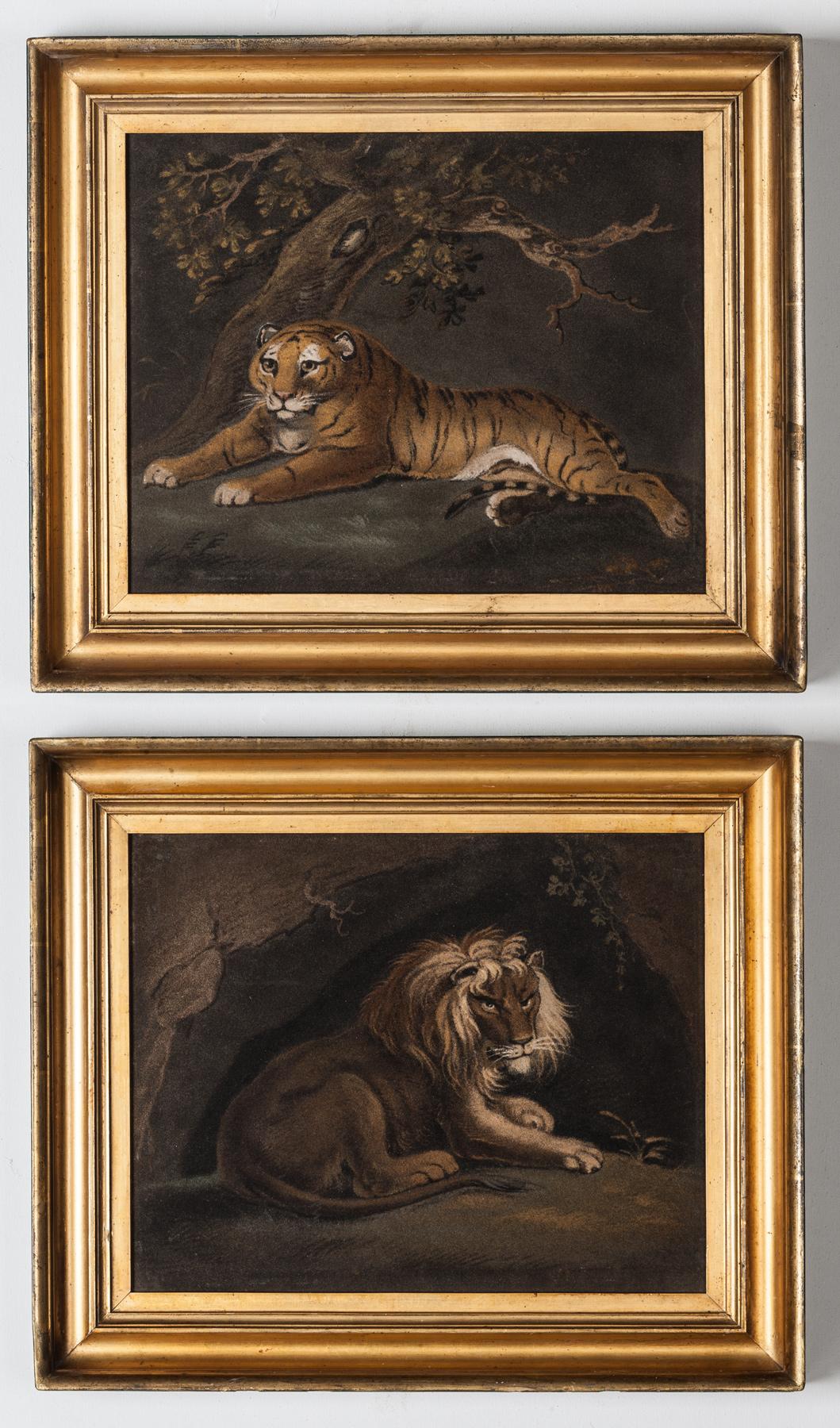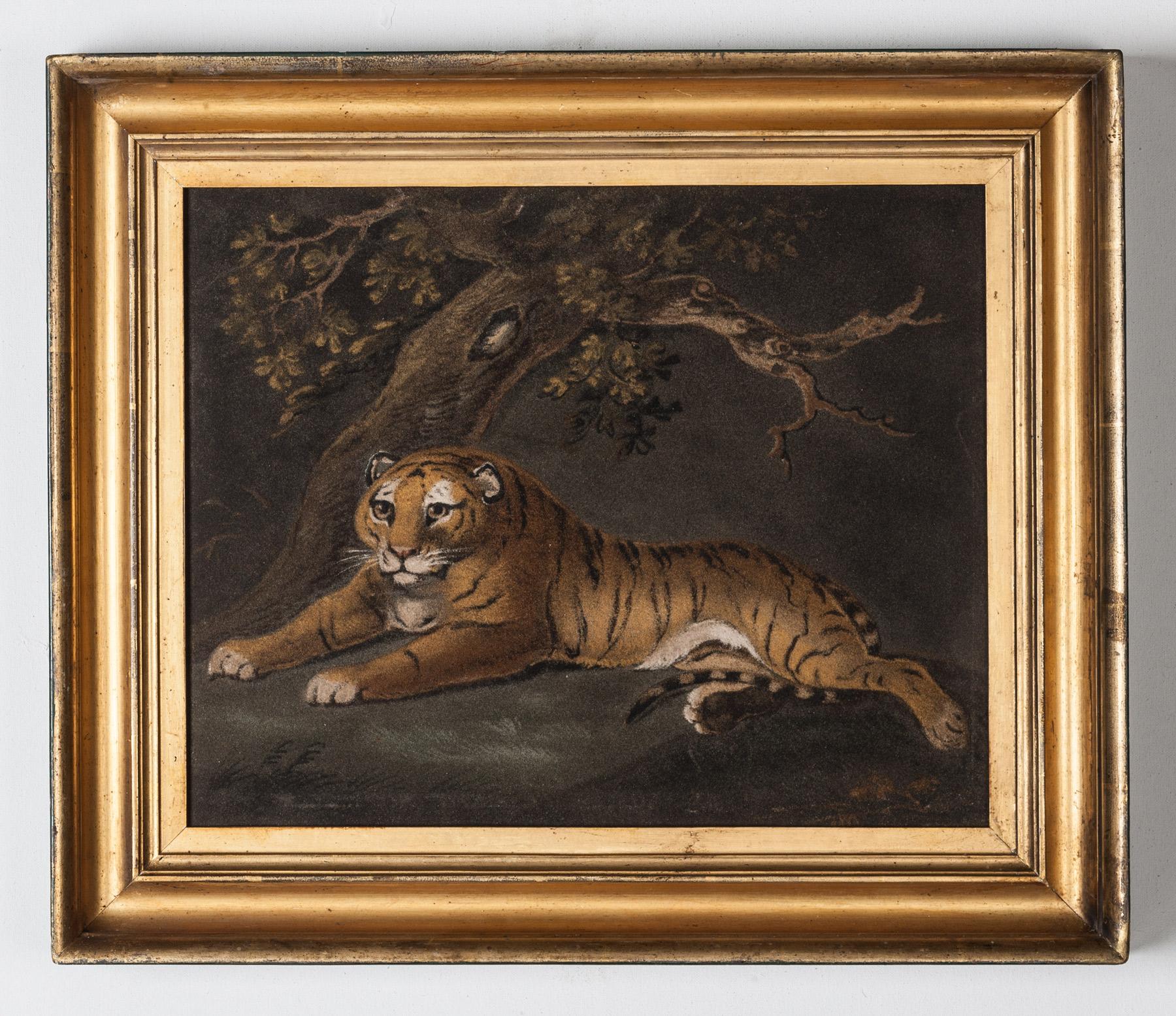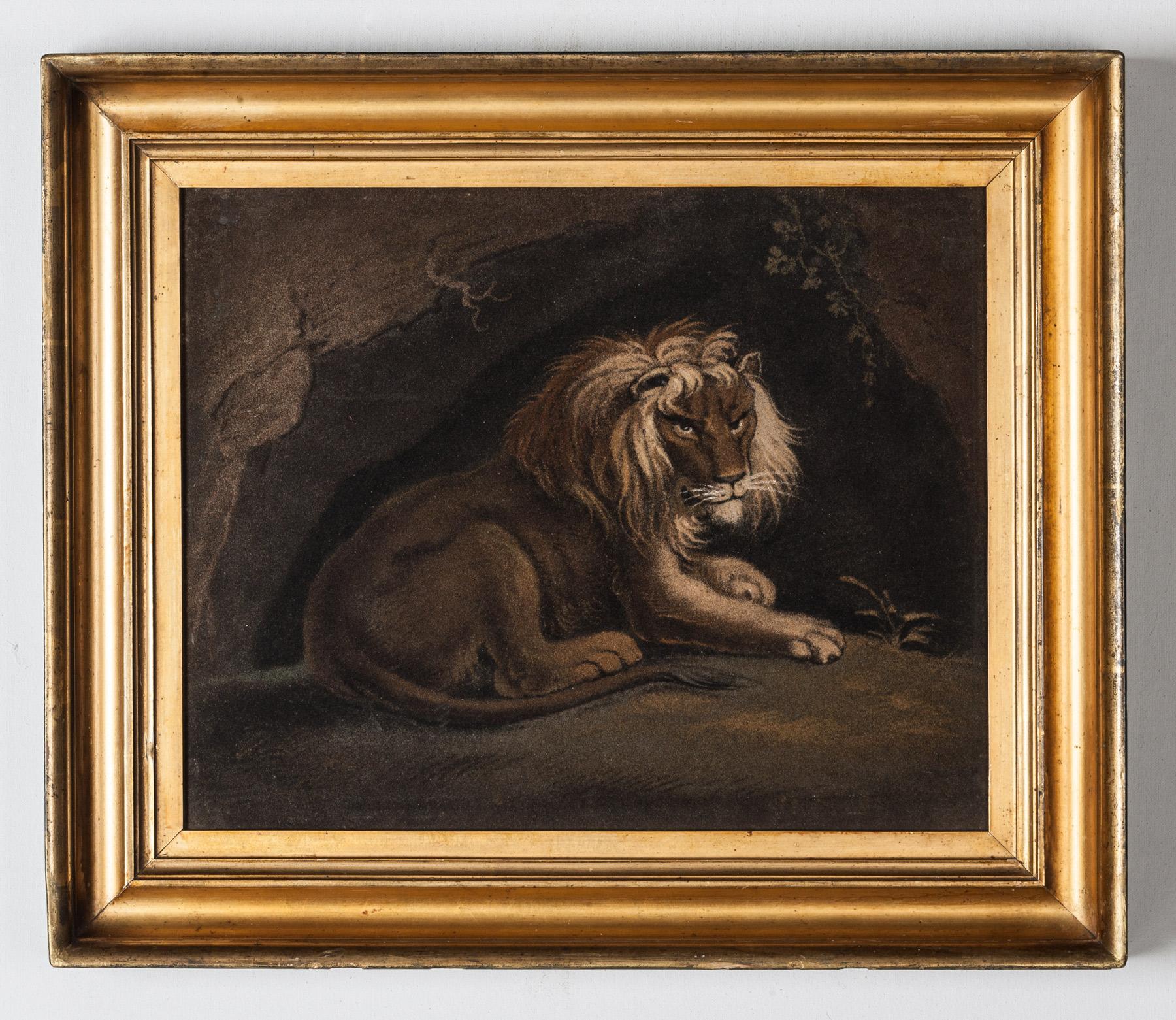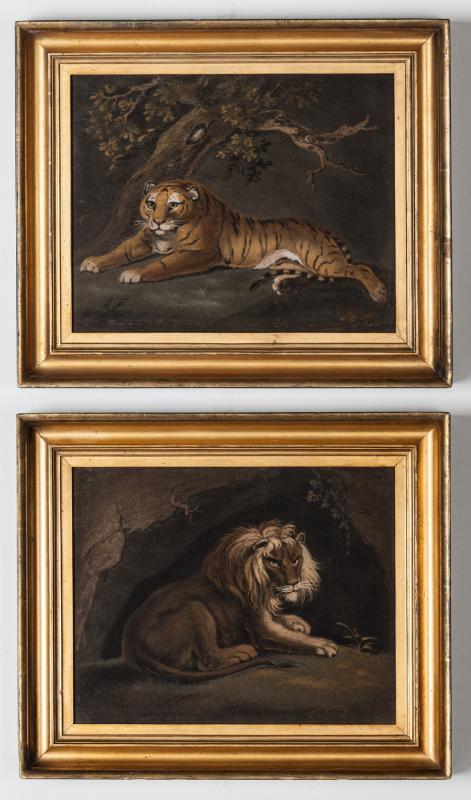Artist: Benjamin Zobel
When Benjamin Zobel produced his sand picture of the Tigress the image was already in high demand. According to articles in the Picture of London for 1803 and The Monthly Magazine of 1806, the reason for the scarcity of John Dixon’s original print was due to the plate being destroyed by fire at his printers. Robert Laurie produced the first copy in 1800 due to its being out of print for ‘many years’ and Mary Linwood had made one of her ‘Pictures in Worsted’ a little earlier in 1798.
The model for Stubbs original work was the tiger presented to George Spencer, 4th Duke of Marlborough, by Lord Clive in 1762 and installed in the Duke’s menagerie at Blenheim by 1763. The first painting of the tiger was commissioned of Stubbs by the Duke sometime between this same year and 1768, and was exhibited at the Society of Artists in 1769 as ‘A Tyger’. The work remains at Blenheim Palace to this day. There is a butcher's bill in the archives showing the delivery of 24lbs. of meat for the tiger every two or three days, at a cost of three shillings a time, with the occasional head thrown in for fourpence.
Thanks to research by Chris Coles, colesprovenanceresearch@gmail.com, the source for the pendant to the Tigress can be identified as a principle lion in the print after the painting by Peter Paul Rubens, bequeathed to the British Museum circa 1769; Zobel deciding that this lion made a good pendant to Stubbs’ ‘Tyger’.
This pair produced by Benjamin Zobel as sand paintings in around 1800, within period, hollow gilt frames.
o.s:19 3/8 in x 16 3/8 in
s.s:14 5/8 in x 11 5/8 in
Item Code: 5075
£ 7800
Enquire about this item



